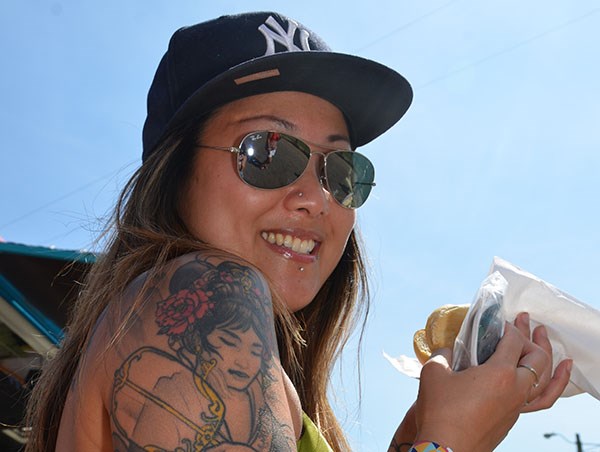Memorable times call for memorable foods. Most of us have early memories of special occasions accompanied by finger-licking dishes of one kind or another. Camping and s’mores, carnivals and corn dogs, baseball games and popcorn – it makes sense that restaurants and food vendors have caught on to the game – people like to eat, especially when having fun and this past weekend’s Squamish Valley Music Festival (SVMF) didn’t fall short of the delicious traditions.
Dozens of vendors did their damndest feeding the thousands of hungry folks in need of refueling between dance-offs, but the history behind their actions was probably not front of mind. Each slurp, lick and bite was bolstered by thousands of years of public celebrations, each tailored to the geography and cultures attached to the people enjoying it.
The elusive Etruscans, who lived in the Mediterranean in 700 BCE, celebrated in style, lounging on daybeds surrounded by elaborate banquet tables covered with wild boar, tuna, hare, deer and birds, drinking some of the earliest wine known to the region. They valued music and dance, and sporting activities, so despite the generation gap would likely have enjoyed both Squamish Logger Days and the SVMF.
In the pre-agricultural era, the local Squamish and Lil’wat First Nations people would celebrate with salmon, bison, venison, duck, sea urchin, clams, seal, wild berries, roots, herbs and bannock made from tree lichen and dried berries, among other things. Sharing was highly valued, as exemplified in the potlatch festival, which included the giving of blankets and food to guests, plus music, storytelling and dance.
In the Indian tradition, staples of basmati rice and Bengal gram were complimented by dishes made from a variety of herbs and spices to make the rich curries and chutneys that are still famous today. While most Hindus are vegetarian, lamb and chicken were, and are popular additions for non-vegetarian dishes. Ancient Hindus would celebrate Diwali, an autumn festival of light held after the summer harvest, for five days, during which time they would buy treats for loved ones, create art, tell stories and clean house.
In early medieval England, Anglo-Saxon pagans would offer cakes to their deities, make animal sacrifices, and celebrate many times a year in tune with the changing seasons. During Modraniht, or Mother Night, held on the winter solstice they would decorate with evergreen branches, burn a Yule log and feasts would revolve around a boar’s head. Substitute the boar for a turkey and it all starts to sound familiar.
The rituals of festival permeate far beyond their origins, as we witnessed in the food courts and dance floors of this summer’s SVMF. Favourites like lamb gyros and beer basted pulled pork eaten by folks wearing short shorts (honouring pagan fertility gods) and florescent-framed sunnies (a nod to the weather gods) mark only a slight variation in a long timeline of human celebrations.



